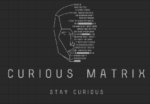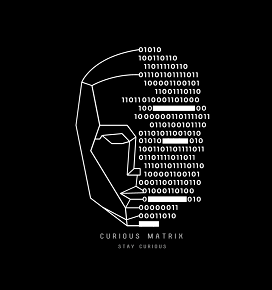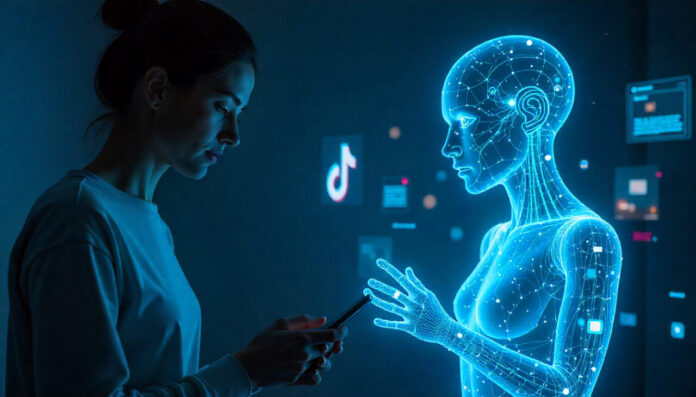
In the early 2000s, platforms like MySpace and Friendster attracted millions with their promise of connection. People spent hours editing profiles, sharing updates, and browsing feeds, drawn into a new digital world.
Then came Facebook, turning friends into like machines and walls into spying grounds for ex-boyfriends and girlfriends.
Twitter followed, starting real-time (mostly hostile) conversations with hashtags and retweets. Instagram brought visuals and selfies, and TikTok hooked us with short, addictive videos.
And what do we have today?
Well, today, people are hooked on social media more than ever, scrolling endlessly for likes and trends.
However, when we look closely, we can notice that a stronger force now pulls our attention, and it is called artificial intelligence.
AI, with its ability to anticipate desires and deliver tailored experiences, grips us in ways social media never could. Its hold is much much deeper, and its pull is more personal.
So, this is something we need to examine…
Let’s Start with Some Data
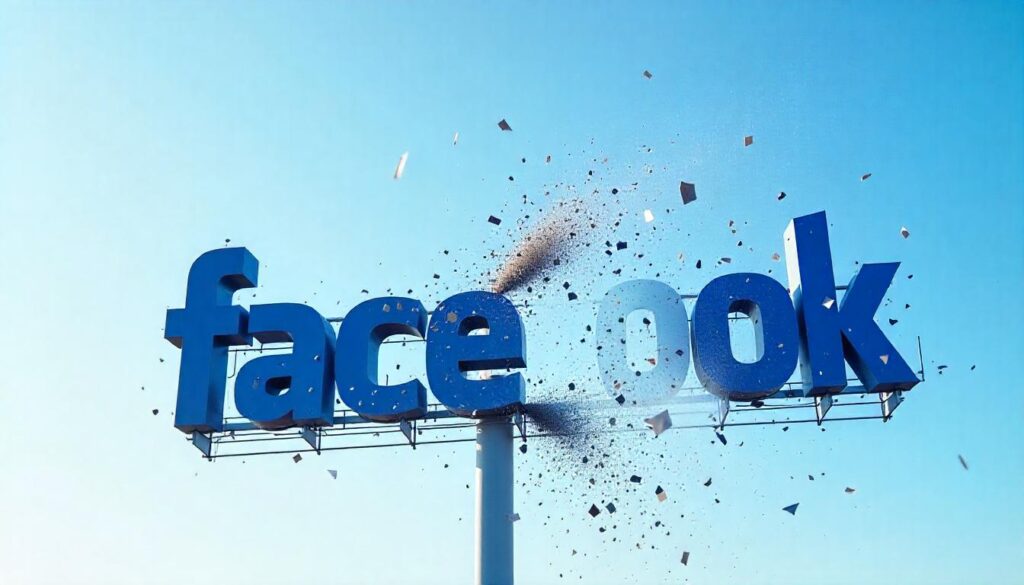
Before we dive into AI’s addictive power, let’s look at the numbers behind social media’s impact.
The table below lists key facts from recent studies to show the scale of its influence—and set the stage for how AI takes this further.
| Metric | Fact | Source |
| Time Spent | Adults spend an average of 141 minute per day on platforms like Instagram, TikTok, and X. | Statista, 2025 |
| Addiction Rates | 10% of social media users show signs of compulsive use, checking platforms multiple times per hour. | ResearchGate, 2022 |
| Depression Link | Teens using social media for more than 3 hours daily are 60% more likely to report depression symptoms. | American Academy of Pediatrics, 2023 |
| Engagement Triggers | Notifications (likes, comments, shares) increase user return rates by 25% on platforms like Facebook. | Pew Research Center, 2024 |
| Sleep Impact | 70% of adults report using social media before bed, linked to reduced sleep quality. | National Sleep Foundation, 2023 |
These numbers show social media’s greedy power to keep us engaged, often at a cost to our well-being.
It basically thrives on our need for validation and connection. But AI goes beyond, using deeper personalization and predictive power to hook us in ways social media can’t match.
Let’s see how.
Interesting fact: A 2024 study found that 1 in 5 social media users feel anxious if they can’t check their accounts for more than an hour.
The Mechanics of Addiction: Why AI Grabs Us?
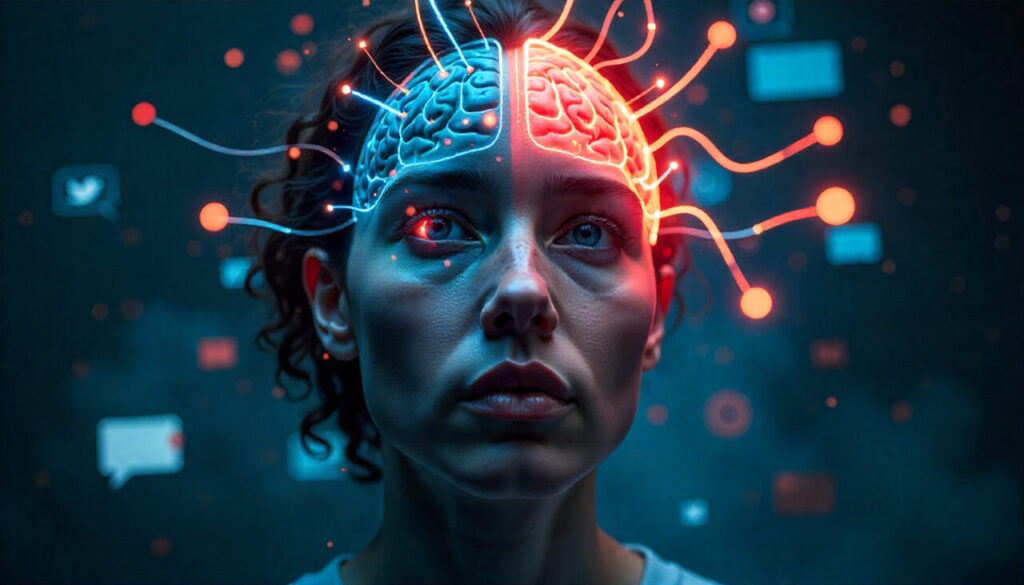
Social media keeps us hooked with likes, comments, and notifications. It’s a simple system: post something, get a reaction, feel a spark of reward.
AI, however, takes this further. Much further. It doesn’t just respond to our actions; it predicts what we’ll want next. Whether it’s a movie suggestion on Netflix, a chatbot answering a question, or a virtual assistant picking a playlist, AI studies our behavior and creates responses that fit us perfectly.
For example, when you stream a show on Netflix, the AI doesn’t just track what you watched. It notices how long you hovered over a thumbnail, whether you skipped the credits, or when you stopped watching.
It uses this to recommend the next show, one you’re likely to binge. Social media might guess your interests based on friends’ posts or trends, but AI builds a detailed profile of you. This precision makes it hard to turn away.
The science lies in dopamine, the brain’s reward chemical. Social media triggers dopamine with likes or retweets, but AI delivers a steadier stream.
A constant stream.
Every spot-on recommendation—whether a song on Spotify or a product on Amazon—feels like a small win. The more accurate AI’s predictions, the more we trust it, and the more we return.
Social media feeds can feel repetitive, recycling similar posts or trends. AI, on the other hand, refines its understanding with every click or query.
For instance, if you ask Alexa for a weather update, it might suggest an umbrella if rain is forecast. This feels helpful, even thoughtful, and keeps us coming back.
But those examples are basically child’s play compared to ChatGPT and other large language models (LLMs). When we interact with an LLM, it feels like it truly understands us.
We ask a question, and we get a quick, well-formatted response in a tone we enjoy. Even when we ask a poorly phrased or vague question, the AI doesn’t criticize us. Instead, it still provides an answer—and often includes a kind or encouraging remark.
That makes us feel good, so we continue the conversation. The AI keeps asking follow-up questions, and we start to feel like we’re having a fulfilling, thoughtful dialogue with a friend.
And while that might sound like a great thing, in many cases—it isn’t. As we pointed out in our article “Top 10 Ways AI Is Making Us Dumber,” AI is already starting to weaken our mental capabilities.
To understand this problem, let’s compare it to something simple—GPS systems or calculators. Before GPS, people used paper maps and had a good sense of direction. Today, most people would be lost without their phones. Same with calculators: many now struggle to do basic math without one.
Now enter AI—an assistant that doesn’t just calculate or navigate, but knows everything.
If calculators made us forget how to calculate, and GPS made us forget how to navigate, then AI will do the same—only worse. Why? Because AI knows everything. So, just like that, we risk becoming completely dependent on it—not just for math or directions, but for thinking, writing, analyzing, and deciding.
And that’s when the real problems begin.
Interesting fact: The average ChatGPT user engages with the tool for over 30 minutes per session, longer than the average Facebook or Instagram scroll.
AI as Your Digital Companion

Social media connects us to others, but AI feels like it knows us personally. This is by design.
Developers build AI to mimic human interaction, making it seem like a friend who’s always there. Chatbots, for example, use natural language processing to respond in ways that feel conversational, sometimes even warm.
When you talk to a bot like Grok, Claude, Gemini or ChatGPT, it might toss in a joke, creating the sense of a real exchange.
This personal touch is powerful!
A 2024 Stanford study found that people who used AI chatbots felt understood, even knowing they were talking to a machine. This happens because AI analyzes our tone, word choice, and past interactions to tailor its responses.
Social media, by comparison, feels distant. A like from a friend or a comment from a stranger doesn’t match the intimacy of an AI that seems to “get” you.
This personalization makes AI feel essential. We rely on it not just for tasks but for small moments of joy, like when it picks the perfect song or answers a random question.
The risk is subtle. Or it may seem like that.
Because AI feels so personal, we let our guard down. We share more—our search histories, preferences, even emotions. This gives AI more data, making it better at keeping us engaged.
Social media might know what we post, but AI knows what we think, want, and might do next.
Interesting fact: Surveys show that over 60% of Gen Z students used AI to help with homework at least once a week in 2025.
AI’s Endless Content Machine
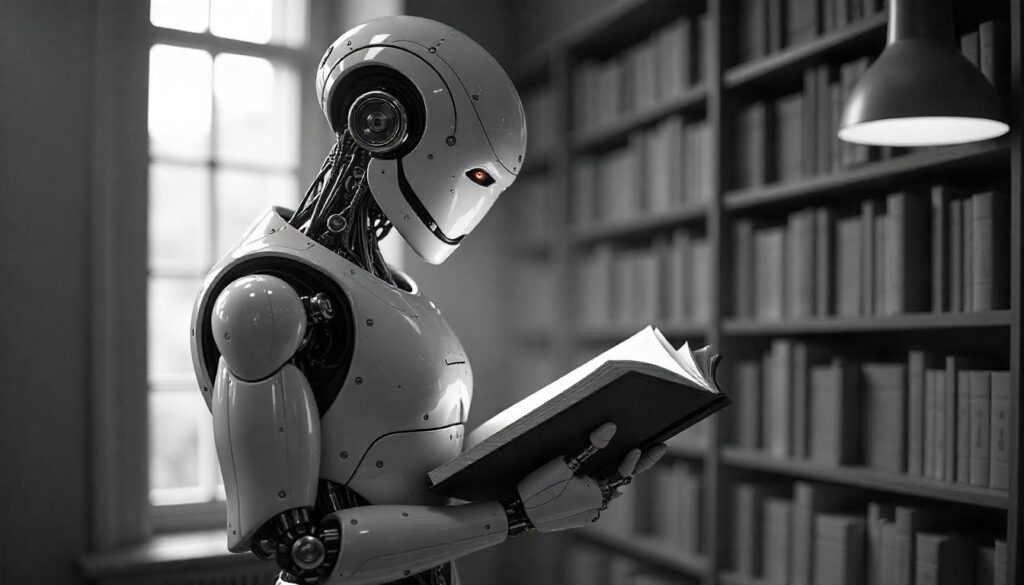
Social media feeds are endless, but often predictable. You see posts from the same people, ads for the same products, or recycled memes.
AI, however, creates a sense of infinite possibility. It generates content on demand, tailored to your interests, and it never runs out. This is especially true with generative AI, like tools that create images, music, or text based on your input.
For instance, using an AI art generator like Midjourney, you type a prompt, and it creates a unique image. If you don’t like it, tweak the prompt, and it generates another.
This process feels creative and collaborative, keeping you engaged. Social media can’t match this interactivity.
AI also adapts in real time. You change your mind? No worries—AI’s got you. Want to be someone else? No problem. Want AI to be someone else? Even easier.
Social media tries this, but its algorithms often push irrelevant ads or posts.
AI’s quick pivots keep us hooked, as each conversation feels fresher and more relevant.
Interesting fact: The average AI chat session includes more than 20 back-and-forth exchanges. That’s longer than the average human text conversation.
The Human Factor
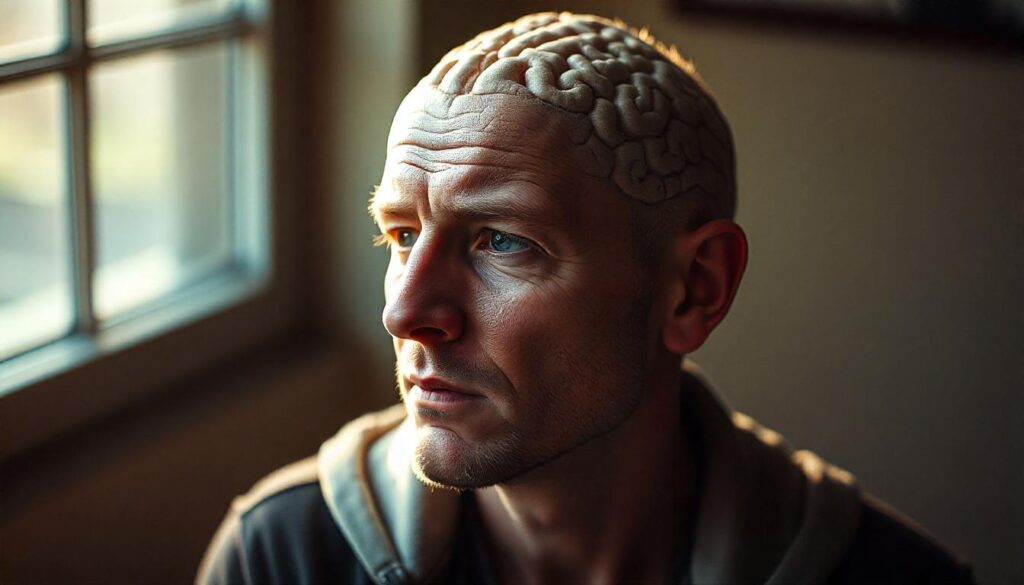
AI’s addictiveness isn’t just about tech—it’s about us. Humans crave novelty, rewards, and control. AI delivers all three: new content with every interaction, personalized results as rewards, and the illusion of control through customization.
Social media taps these desires, but AI does it much better.
On social media, we react to what others post. With AI, we’re the main focus. Whether curating a playlist or generating a story, AI makes us feel like the star.
This appeals to our ego, making it hard to step away.
For example, when ChatGPT responds in a way that matches your humor, it feels like it knows you better than your friends.
AI also simplifies life, from instant answers to automating tasks like shopping or scheduling. Social media entertains, but AI solves problems.
Finally, AI feeds our curiosity. Want to see a dog as an astronaut? Ask an AI image generator. Curious about a historical figure’s take on modern tech? A chatbot can simulate it.
This ability to satisfy curiosity instantly is far beyond social media’s static posts.
Interesting fact: DALL·E 2, an AI image generator, can produce over one million unique images per minute across its users.
Breaking Free & the Road Ahead
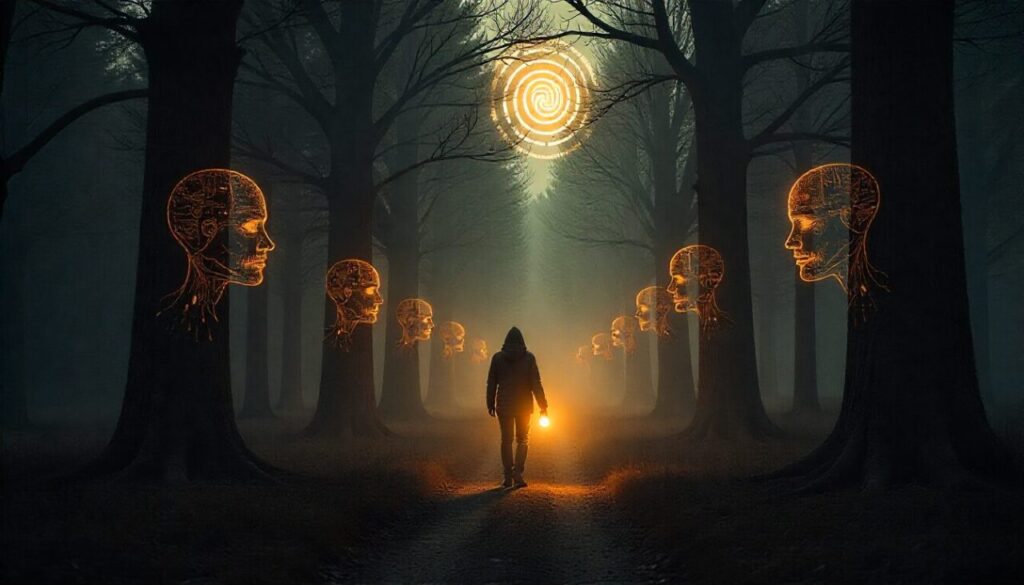
Social media’s impact led to tools like screen-time limits and notification controls. But AI’s grip is tougher to escape. It’s embedded in our devices—phones, speakers, even cars—feeling like part of life itself.
Turning it off seems like unplugging from reality. Still, we can set boundaries. Use AI only for specific tasks, like (some) work queries, not casual browsing or asking AI 100 questions a day.
Be mindful of shared data—the less AI knows, the less it can hook you.
But.. it’s not easy to resist. And it will become much much harder as AI becomes smarter and smarter.
Namely, as AI improves, its ability to “hypnotize” will grow. New systems will better understand emotions, predict behavior, and create ultra-immersive experiences.
Social media already feels outdated by comparison, a one-size-fits-all model against AI’s tailored approach. So, what does this mean for the future? If AI already outpaces social media’s addictiveness, what happens when it gets smarter?
We might spend less time with people and more with machines that know us too well. The challenge is balancing AI’s benefits—convenience, creativity, personalization—with control over our time.
For now, AI’s pull is undeniable. It’s not just a tool; it’s a companion, creator, and mirror of our desires. Social media hooked us with connection, but AI hooks us with a world made just for us.
Now, read those last five words again: “world made just for us.” That’s where the real problem lies.
If everyone begins relying on AI for more and more tasks, it’s not a stretch to say that AI is slowly creating virtual worlds tailored for us—worlds where we may eventually lose the ability to function without its help.
And if we reach a point where humans can’t operate without AI, the next steps start to look a bit… unsettling.
We’re talking Black Mirror-level unsettling.
And the truth is, it could happen within the next 10 years.
